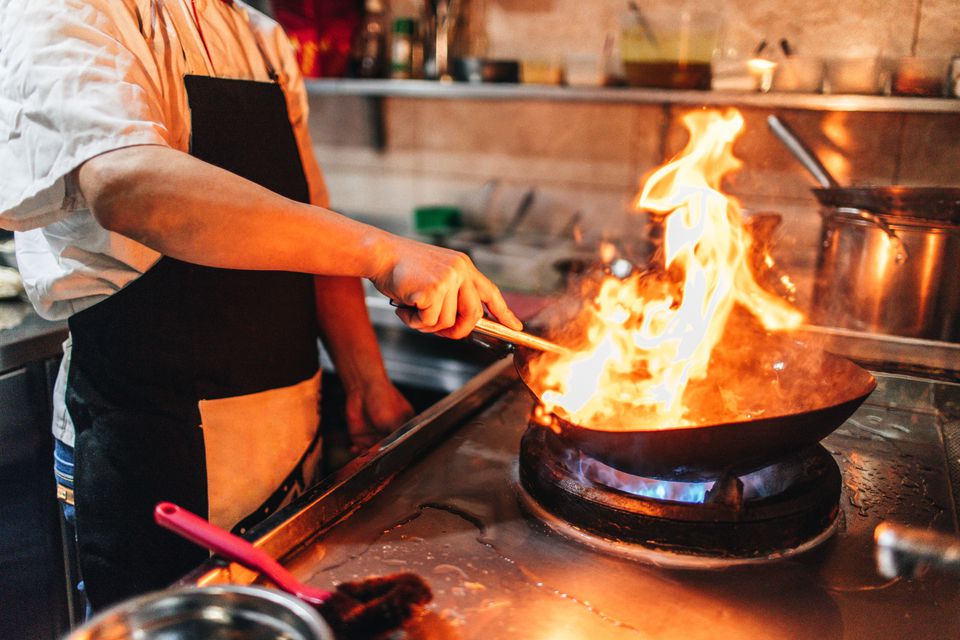Basic Tips For Cooking Chinese Food

By Rhonda Parkinson
01 of 09
General Chinese Cooking Principles
Here are 3 general principles for Chinese cooking:
· Try to vary the meat and vegetables in a dish so that there is an interesting variety of flavors, textures, and colors. The Chinese believe it is important to find balance and harmony in every aspect of life, including food.
· Fresh is best: always use fresh ingredients when possible.
· Be sure to have everything prepared before you start cooking: the vegetables washed, drained and cut; the meat cut and marinated; the sauces prepared.
02 of 09
Chinese Cooking Equipment
Tips about the equipment you'll need:
· While you don't absolutely need one, a wok is the one piece of cooking equipment you may want to purchase before you start cooking Chinese food.
· While it's nice to own one, you don't need a cleaver to cook Chinese food.
· And some additional reading:
03 of 09
Tips for Preparing Vegetables
Preparing the vegetables properly is an investment in success:
· Wash green, leafy vegetables ahead of time. This gives them more time to drain so they will not be too wet when you stir-fry.
· Place all the cut vegetables on a tray or cooking sheet. That way, you won't forget anything. Just be careful not to mix them up, as cooking times will vary among vegetables.
04 of 09
Tips for Stir-Frying Vegetables
Here's how to properly stir-fry the vegetables you just prepared:
· When stir-frying vegetables, cook the toughest and thickest vegetables for a longer period than the softer, leafy vegetables. Vegetables such as broccoli, carrots, and cabbage need to be cooked longer than bok choy, which in turn is cooked longer than snow peas or bean sprouts.
· If you are uncertain in which order to cook vegetables, simply stir-fry them separately. Never overcook.
05 of 09
Tofu (Bean Curd) Tips
Tofu, or bean curd, is a staple that is often misunderstood. Here are 2 tips:
· For stir-frying or deep-frying, use firm or extra-firm tofu. Firm tofu will keep its shape and not fall apart in the wok.
· Drain the tofu before using, as this allows it to absorb the other flavors in the dish.
06 of 09
Meat and Fish Tips
Meat and fish preparation and stir-frying tips:
· Always marinate fresh meat.
· If a marinade calls for cornstarch, add it last. It will act as a binder.
· Always cut beef across the grain. This helps make it more tender.
· Cut the meat into uniform pieces so that it will cook more evenly.
· When cooking meat or poultry, make sure that the wok is very hot before adding the food.
· If preparing stir-fried meat and vegetables, stir-fry the meat first and set it aside. Usually you will return it to the wok with a sauce during the final stages of cooking.
07 of 09
Tip for Cooking With Oil
Here's how to cook with oil:
· When adding oil for stir-frying, drizzle the oil down the sides of the wok.
· When deep-frying, to tell if the oil is hot enough, simply stick a chopstick in the wok. When the oil sizzles all around it, you can begin adding the food.
08 of 09
Sauce and Seasoning Tips
Bring out the flavor with these sauce and seasoning tips:
· Always use fresh ginger, not powdered.
· If desired, use sugar as a substitute for MSG (Monosodium Glutamate).
· The formula for mixing cornstarch and water is 1 to 2 or 1 to 4: for example, 1 tablespoon of cornstarch with 2 tablespoons of water.
· Don’t use more cornstarch than called for in the recipe
09 of 09
Rice Tips
Rice is the basis, and here are the basics:
· For best results when cooking rice, use long grain rice.
· When making fried rice, use cold cooked rice, preferably at least one day old.
